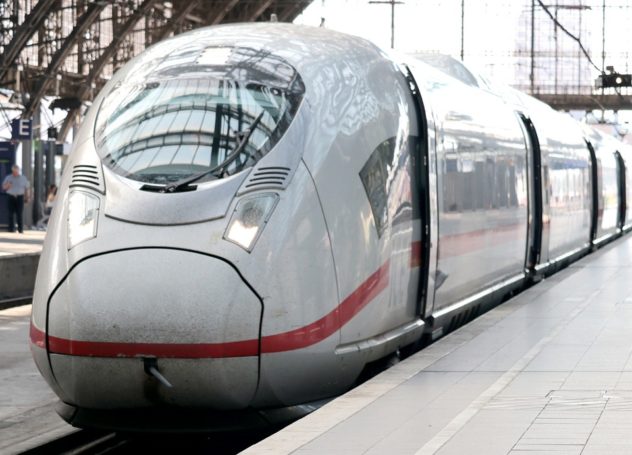Vocabulary:
- stretch /strech/
- radiation /rey-dee-EY-shuhn/
- suspend /suh-SPEND/
- catastrophe /kuh-tas-TRUH-fee/
- revitalization /ree-VAHY-tahy-lahy-zey-shun/
[noun] a continuous area of land or water
This particular stretch of land in the province of Mindoro is popular among tourists.
[noun] a form of energy that comes from a nuclear reaction and that can be very dangerous to health
Exposure to high levels of radiation can cause a detrimental effect on someone’s health.
[verb] to stop or delay something either temporarily or permanently
The classes were suspended due to the super typhoon.
[noun] a sudden event that causes great trouble or damage
Environmental catastrophes can cause massive destruction to people.
[noun] the process of making something grow, develop, or become successful again
Involving and thinking citizens is the key to a country’s revitalization.
East Japan Railway Co.’s (JR-EAST Train) train service on the Joban Line completely resumed on March 14 nine years after the March 2011 triple disaster. The 344-kilometer Joban line that connects Tokyo and Miyagi Prefecture was the last remaining line to resume operations this year 2020. According to JR East, repair work on Joban Lines’ broken stretch was delayed due to high levels of radiation on the aforementioned areas. Before the reopening, JR East had provided bus services for the closed part of the Joban Line. Limited express trains connecting Tokyo to Sendai, the capital of Miyagi, will make three round-trips per day.
JR-EAST Train service on a 20.8-kilometer distance between Tomioka and Namie near the disaster-hit Fukushima Daiichi nuclear power plant, the last part of the line, had been suspended since the catastrophe. Although some people expect that the development of public transport in affected areas will increase the number of visitors and boost regional revitalization, others believe that the effects will be limited as most locals still prefer cars as the main mode of transport. On March 11, 2011, northeastern Japan was struck by a magnitude-9.0 earthquake that caused enormous damage in the region. This disaster is also called The Great Sendai Earthquake or The Great Tōhoku Earthquake.
JR-EAST Train service on a 20.8-kilometer distance between Tomioka and Namie near the disaster-hit Fukushima Daiichi nuclear power plant, the last part of the line, had been suspended since the catastrophe. Although some people expect that the development of public transport in affected areas will increase the number of visitors and boost regional revitalization, others believe that the effects will be limited as most locals still prefer cars as the main mode of transport. On March 11, 2011, northeastern Japan was struck by a magnitude-9.0 earthquake that caused enormous damage in the region. This disaster is also called The Great Sendai Earthquake or The Great Tōhoku Earthquake.
True or False:
- The Joban Line completely resumed operations on March 14 after 15 years.
- JR-EAST Train service on a 20.8 kilometer stretch between Tomioka and Namie near the disaster-hit Fukushima Daiichi nuclear plant.
- The Joban Line is 200 kilometers.
- According to the transport ministry, it took less than a year for railway lines to reopen after the disaster.
- Sendai is the capital of Miyagi.
Discussion Questions:
- Do you think that the reopening of all railway lines of JR East will boost the local economy? Why or why not?
- Have you been to Sendai or any disaster-hit areas of the Great East Japan Earthquake? Kindly explain.
- How does the Japanese government usually react to catastrophes, like earthquakes and typhoons?
- What was your memory of the 2011 Great Sendai Earthquake or Great Tōhoku Earthquake?
- Do you think people can prevent natural disasters? Explain your answer.
Express Your Opinion:
- “We cannot stop natural disasters but we can arm ourselves with knowledge: so many lives wouldn’t have to be lost if there was enough disaster preparedness.” – Petra Nemcova
- “We learn from every natural disaster. Whether it’s a fire or a flood, we learn something from it so we can respond to the next one better.” – Malcolm Turnbull
- Trains are the best mode of transportation.
